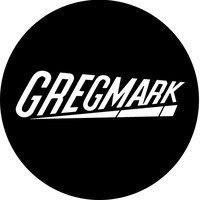Barbara Dane
Barbara Dane was born in Detroit, Michigan in 1927. She is a revered blues, jazz and American folk singer and guitarist. Louis Armstrong once said; "Did you get that chick? She's a gasser!" and invited Dane to appear with him on the national television broadcast of the Timex Jazz show. Jazz critic Leonard Feather called her "Bessie Smith in stereo". She appeared on other national TV shows such as The Steve Allen show, Playboy Penthouse, Alfred Hitchcock Presents, PM East/West, Bobby Troop's Stars of Jazz, Playboy After Dark, Bobby Troops Stars of Jazz, and as a solo guest artist on the Johnny Carson Tonight Show. Dane played in Chicago with Art Hodes, Roosevelt Sykes, Little Brother Montgomery, Memphis Slim, Otis Spann, Willie Dixon and toured the East Coast with Jack Teagarden. She also performed and recorded with Benny Carter, Lightnin' Hopkins, the Chambers Brothers, Earl Hines with Shelly Manne, Plas Johnson and many others.
After receiving a special award from Hugh Hefner as one of the outstanding jazz artists of the year, Dane scored a Top 40 hit in 1960 with a single on the Trey label titled "I'm On My Way" that was produced by Lester Sill and Lee Hazlewood. It has become a cult classic in recent years on England's Northern Soul scene. As the B-Side to "I'm on My Way", Dane recorded a haunting version of "Go Way' From My Window" also produced by Lester Sill and Lee Hazlewood on Trey. These original Trey releases have been preserved and are represented through Gregmark Music.
Dane had the ability to effortlessly transcend musical genres by incorporating folk, gospel, R&B, funk, rock and jazz throughout her recordings. Gregmark's entities Debbie Jo Music and Lonette Music also co-published Dane's timeless arrangements of "Goodbye Daddy Goodbye", "Wild Women Don't Have the Blues'', "This Little Light of Mine'', and the jumpin rock adaptation "Mama Don't Allow No Twistin''.
In l966, Dane became the first American musician to tour post-revolutionary Cuba. Throughout the 1960s and '70s, she sang at demonstrations in Washington and in small towns across America, including the Freedom Schools of rural Mississippi all the way to the gates of military bases in Japan and Europe.




